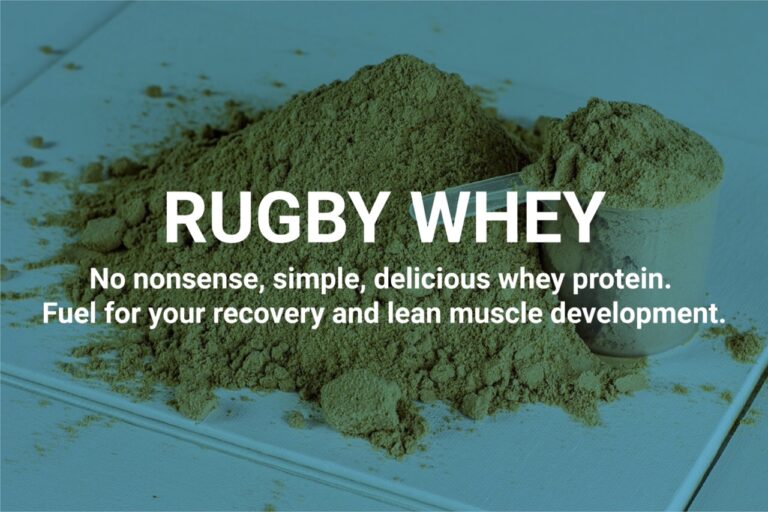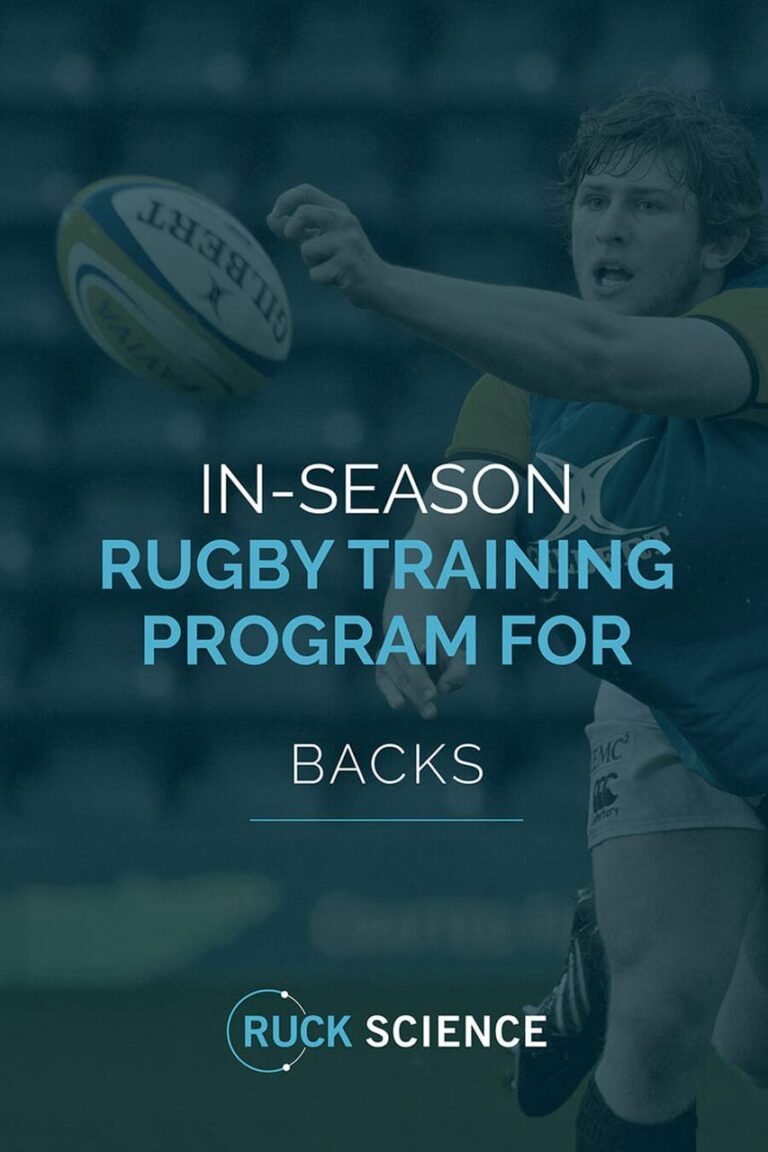
Rugby is one of the few sports that require a high level of all-around physical fitness. To be successful, a rugger needs to have an abundance of:
- Speed
- Power
- Strength
- Endurance
- Anaerobic fitness
- Aerobic fitness
- Mobility
- Flexibility
- Agility
- Coordination
In contrast, other sports often only need a couple of these components. For example, long-distance runners only really need a high level of aerobic fitness. Powerlifters mostly need strength and adequate mobility to perform the big three competitive lifts – the squat, bench press, and deadlift.
The need for all-around fitness is what makes rugby such a challenging sport to train for. Only MMA and other competitive combat sports really come close to the physical demands of rugby.
This raises a question: How strong are rugby players? This article is our attempt to answer that question!
What is Strength, Anyway?
Strength is the ability of a muscle or muscle groups to generate maximal force and is usually expressed as your one-repetition maximum, or 1RM for short. Unlike muscle power, which is force generated quickly, movement speed is not part of strength, and it’s all about the amount of weight you are lifting.
A one-repetition maximum is the amount of weight you can lift once. If you can lift something twice or more, you’re actually measuring strength endurance, which is something quite different.
Strength can be measured in several ways, but the most practical is doing 1RM testing on common gym exercises. That said, in a sports lab environment, strength is sometimes assessed using devices called dynamometers.
In theory, you could do 1RM testing on any exercise, from biceps curls to calf raises to triceps pushdowns. However, testing individual muscles would be time-consuming and impractical.
Also, muscles tend to work in groups, so it makes more sense to test those muscle groups together. After all, that’s how they work on the rugby field.
Because of this, rugby strength testing tends to revolve around a small handful of compound barbell exercises, such as:
Barbell back squats
Bench presses
Deadlifts
Overhead presses
However, the most common strength tests for ruggers are the back squat and bench press, which are the focus of this article.
How Strong Are Rugby Players – Back Squats
The back squat is the so-called king of exercises. Whether you want to sprint faster, jump higher in the lineout, or tackle harder, the squat will develop the muscles needed for your success.
But, how much can rugby players squat?
The answer is a lot!
Because squats involve such a large number of muscle groups, the loads tend to be quite heavy. In the case of professional players, ruggers often squat weights that would make a wannabe powerlifter blush.
That said, every rugger is different, and while some players are superhuman in the gym, others are only somewhat above average.
A recent Spanish study compared the average 1RM squat strength of National Amateur rugby players by position and gender:
- Male forwards: 195.25 kg/429.55 lb.
- Male backs: 209 kg/459.8 lb.
- Female forward: 113.88 kg/250 lb.
- Female backs: 140 kg/308 lb.
It’s very interesting to see that the backs outperformed the forwards in the squat. Forwards are usually stronger than backs, but, in this study, that was not the case.
The average professional rugby player is expected to be able to squat at least twice their body weight. To put this in perspective, 140kg/308 lb. would be considered a pretty good squat for an average male gymgoer, and many would be happy to be able to squat 100kg/220 lb.
How Strong Are Rugby Players – Bench Press
Get two gym-bros together, and invariably, one will ask the other, “Hey – how much can you bench?” Even non-exercisers know the bench press is a famous exercise, even if they don’t know which muscles are actually involved!
The bench press is THE classic test of upper body strength. It specifically targets the pectoralis major, deltoids, and triceps muscles, which are your main pushing muscles. If you want to be able to push opposing players off the ball and defend against tackles, being a stronger bencher will help.
The same Spanish study compared the average 1RM bench press strength of National Amateur rugby players by position and gender:
- Male forwards: 95kg/209 lb.
- Male backs: 100.5kg/251.25 lb.
- Female forward: 35kg/77 lb.
- Female backs: 41.42kg/91.124 lb.
According to this study, at least, the participants were far better squatters than they were benchers, and again, the backs outperformed the forwards. A 100kg bench press is relatively common, and a lot of average gym-bros can put up this kind of weight.
That said, ruggers also need to be strong overhead and cannot be considered bench press specialists, which may explain why the bench press scores are less impressive than the squat scores.
The average professional rugby player is expected to be able to bench 1.5 times their body weight. As you can see from this list of pro New Zealand players, many can exceed this standard. Ruggers are not just big squatters but big benchers, too!
The Basics of Getting Stronger
Because strength is such an essential component of rugby, most players need to work on getting stronger.
While it’s beyond the scope of this article to provide you with a detailed strength training program, we can offer some guidelines that will help make your workouts more productive.
Focus on the big lifts – while the bench press and squat are two of the best exercises for testing strength, they’re among the best for building it, too. Ruggers should focus on compound exercises as they’re generally the most effective and time-efficient.
Good exercises for rugby strength include:
- Squat variations – back, front, Zercher, box, paused, etc.
- Deadlift variations – conventional, sumo, Romanian, paused, rack pulls, etc.
- Bench press variations – barbell, dumbbell, paused, wide grip, narrow grip, etc.
- Overhead press – barbell, dumbbell, seated, standing, push-press, etc.
- Vertical pulls – chin-up, pull-up, lat pulldown, etc.
- Horizontal pulls – bent-over row, single-arm row, seated row, chest-supported row, etc.
That’s not to say you can’t include isolation exercises in your workouts, but the “meat and potatoes” of your training should be compound exercises.
Train mostly with low reps and heavy weights – specificity is the underlying training principle of any successful workout. Your body adapts to the type of workout you do; if you want to get stronger so you can lift heavier weights, you need to lift heavy weights in training.
Heavy is a relative term, but for rugby strength workouts, it means working with weights of 85% or more of your 1RM and using the 1-5 rep range.
Take 3-5 minutes between sets – lifting heavy weights takes a lot out of your body. It fatigues your muscles and disrupts the central nervous system. If you rest too little between sets, you won’t be able to lift such heavy weights or do as many reps. As such, rest periods between sets should allow for a full recovery.
You don’t have to be idle or passive between sets. You can use your 3-5 minutes to do mobility or flexibility training, or do a non-competing exercise, e.g., a set of pull-ups between sets of squats, or band pull-aparts between sets of bench presses.
Increase your weights gradually – you are only as strong as your last workout, and if you want to get stronger, you need to incrementally lift more weight. If you are new to strength training, you’ll probably find that you can increase your weights almost weekly. But, as you get stronger, increases will be harder to come by and will likely be smaller, too.
Regardless of where you are on your training journey, you must try to lift more weight if you want to keep getting stronger. If you don’t, your progress will plateau.
Make sure your diet and lifestyle support your training – what you do in the gym is only part of the equation for getting stronger. What you do out of the gym is just as important.
Factors to consider include:
- Consuming enough protein – one gram per pound is a good target for most ruggers
- Get 7-9 hours of sleep per night
- Eat plenty of vegetables, whole grains, healthy fats, and some fruits
- Avoid excesses of junk food, soda, candy, takeouts, etc.
- Go easy on the beer
- Respect your body’s need for rest and recovery
- Match your training to the competitive season, i.e., train harder/longer in the off-season, and cut back on gym time during the playing season
- Deload after intense phases of training to avoid overtraining
How Strong Are Rugby Players – Wrapping Up
Ruggers are undoubtedly stronger than the average human, and strength is a critical factor for successful rugby. However, there is more to rugby than being a good bencher or monster squatter. After all, rugby is played out on the field against the other team, not in the gym where the barbell is your only competition.
So, while getting stronger will probably improve your playing performance, don’t neglect the other aspects of your fitness. There is no point in training to bench 200kg if you can’t run the length of the field without wearing yourself out!
Get strong, but also work on the other fitness components needed for successful rugby.
Reference:
Alonso-Aubin, D. A., Picón-Martínez, M., & Chulvi-Medrano, I. (2021). Strength and Power Characteristics in National Amateur Rugby Players. International journal of environmental research and public health, 18(11), 5615. https://doi.org/10.3390/ijerph18115615










